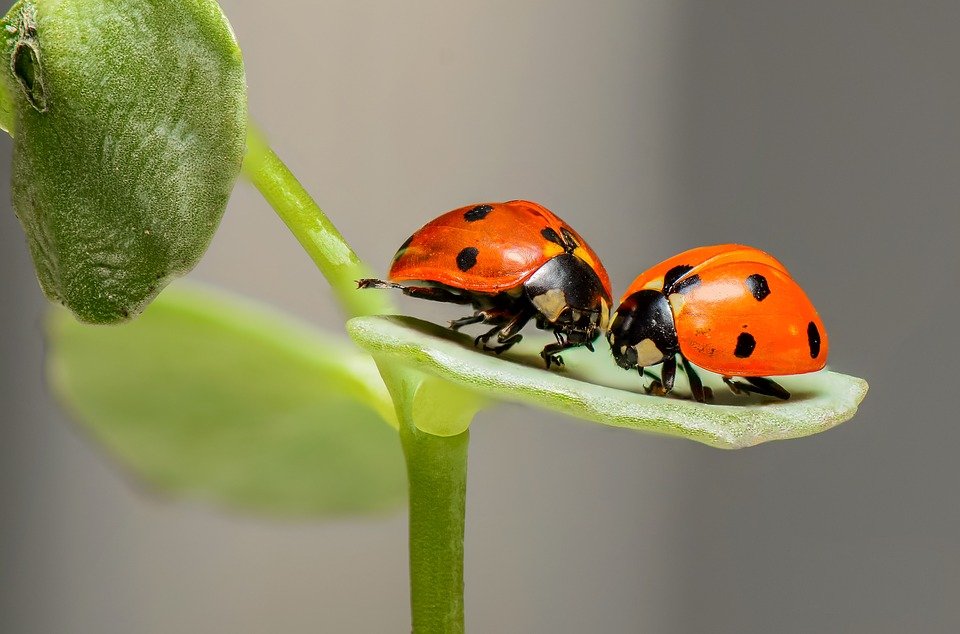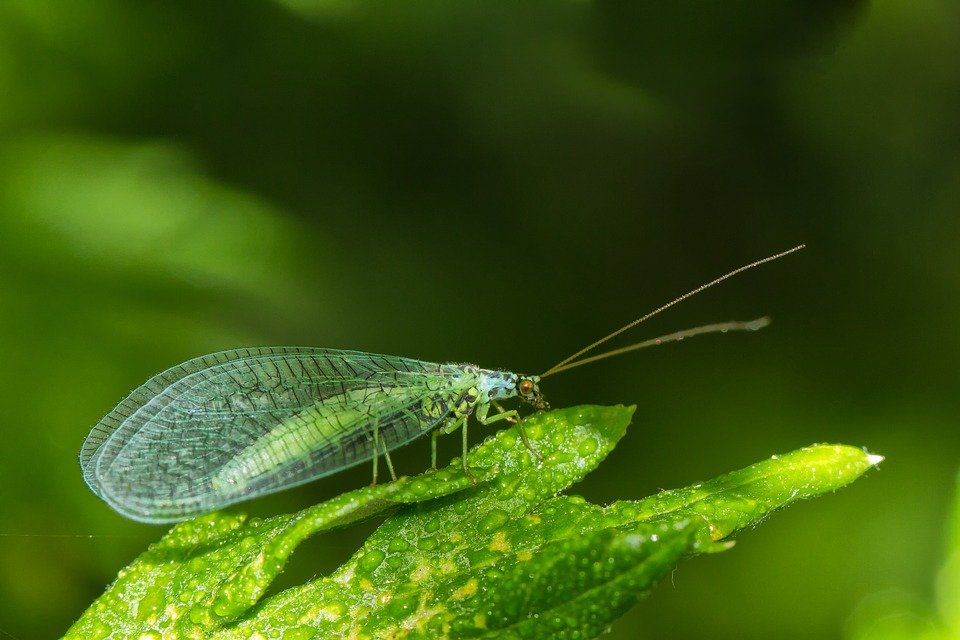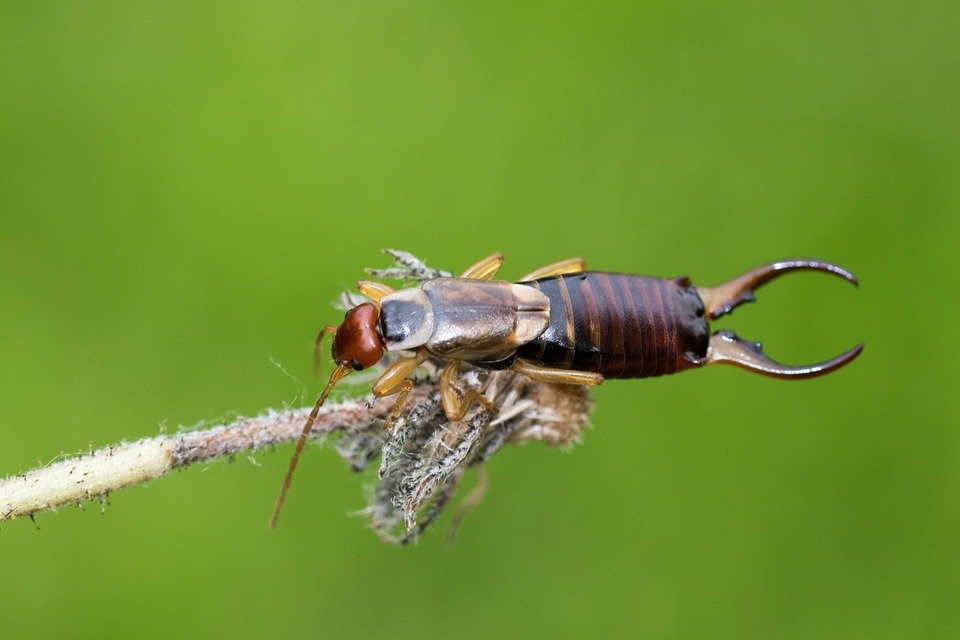Beneficial insects against aphids
- Helpful beneficial insects against aphids
- Let the beneficial insects work for you
- Promote the beneficial insects in your garden
- Target the beneficial insects in the garden
- Biotopes and the food chain
- Ladybirds as a beneficial insect against aphids
- Earwigs as beneficial insects against aphids
- Parasitic wasps as beneficial insects against aphids
- Hover flies as beneficial insects against aphids
- Lacewing
- Gall mosquitoes as a beneficial insect against aphids
- Beneficial insects in the greenhouse
Helpful beneficial insects against aphids
Aphids are important links in the food chain of many living things. On the one hand from many bird species and also from beneficial insects. Spiders, lacewing larvae, parasitic wasp larvae, predatory bugs, hoverfly larvae and ladybirds as well as their larvae and other numerous types of beetles eat aphids and are their natural enemy.
A few aphids in the garden do not necessarily have to be controlled, since the beneficial insects take over this anyway and these would become extinct if there were no aphids. Aphids have numerous predators that can get a small colony under control in no time. The more varied the garden, the more beneficial insects find their way into the garden. Build nests and breeding grounds for beneficial insects so that they can multiply and their larvae eat the pests. A low infestation of aphids is usually only a visual problem, they let the beneficial insects work for you. You will get the problem under control quickly if you like your garden. So set up this beneficial insect in a fair manner.

Let the beneficial insects work for you
- Design the garden as close to nature as possible
- Make the garden varied
- Offer nesting opportunities
- No chemical substances
- Attract beneficial organisms
- Ignore certain numbers of aphids
- Buy and settle beneficial insects
Promote the beneficial insects in your garden
The best way to protect plants from aphids is to take loving care of them and the garden, but you cannot do this alone. Let the beneficial insects do the work for you by making the garden interesting for these animals. Make sure to create a natural garden. Deadwood cannot be missing here. Many beneficial insects lay their eggs in dead wood to provide for offspring. If this is not possible, the beneficial insects will not stay long in their garden and look for another home. Also watch out for biodiversity, many plants help each other to keep insects away. Also cut back your plants again and again. You can help the beneficial animals all year round. Order or build a hedgehog house .
Target the beneficial insects in the garden
In addition to the hedgehogs, lizards, toads, snakes, spiders and other beneficial insects, there are some species that you can order on the Internet and, in particular, settle in greenhouses. These fight inconspicuously but effectively against the pests. Beneficial insects have long been the most tried and tested method of protecting plants from pests and insects. For several years there have been companies that have specialized in beneficial insects and offer them specifically on the Internet. The application is simple and the cost is low and depends on the size of the garden. Do not use chemical agents directly, but try it with beneficial insects and give them a chance. These will also multiply – their chemical agent does not.

Biotopes and the food chain
In addition to insects that the aphids eat, there are also other important beneficial insects for your garden such as hedgehogs, birds, bees and caterpillars. These insects and animals are very beneficial and help to keep the insect percentage low by eating them and being their natural enemy. Birds are welcome guests in the garden. They sing a song and eat caterpillars en masse in the process. However, one cannot differentiate between beneficial insects and pests.
Every animal has its place in the food chain and helps to form a biotope that cannot break up so quickly. However, creating a biotope in your own garden is not that easy, because here people want to determine which plants are planted and which are not. What are weeds and which vermin should be banned from the garden. In nature, there is a natural balance between useful and harmful. This could be difficult in the garden, so you should make sure that your garden is not too one-sided. And should the pests get out of hand, they can easily order beneficial insects online.
Ladybirds as a beneficial insect against aphids
A 2 point ladybird is often used to control aphids in the greenhouse and in the field. The larvae feed on the aphids for about 3 weeks, consuming about 100 aphids a day. After these 3 weeks the larva pupates and a week later it becomes a ladybug. The ladybirds can also eat another 50 aphids a day. Order these beneficial insects as soon as the pests first appear. Please pay attention to the outside temperature when using it, it should not be below 12 degrees and no longer fall below it. Do not store the beneficial insects but bring them into the garden or greenhouse immediately after receiving them. If the infestation is severe, you can continue to use agents that are gentle on beneficial insects.
Earwigs as beneficial insects against aphids
The earwigs are very helpful beneficial insects to counteract aphids. Offer the catchy tunes a suitable habitat with many retreat options. With upturned flower pots or dead wood, you can curl these beneficial insects into your garden. Flower pots filled with straw are ideal quarters for the catchy tune. The earwigs form their own order within the class of insects. There are around 1000 different species worldwide. In Europe only about 30.
The catchy tune is flightless and is between 12 and 17 millimeters in size. This name comes from naturopathy. The myth that catchy tunes crawl into ears at night is wrong. Earwigs are omnivores. They are nocturnal and usually hide in crevices or under leaves during the day. Every now and then, earwigs also eat parts of plants or fruits. In order for the earwigs to settle on their trees in as large numbers as possible to take action against pests, they must offer them the appropriate habitat. Pull a string through a flower pot and hang it upside down and fill it with straw. Unfortunately, earwigs cannot be ordered over the Internet.

Parasitic wasps as beneficial insects against aphids
Parasitic wasps are also able to find individually sitting aphids due to their search ability. With the help of the laying stinger, they lay an egg in the louse’s body. After about 2 days, the larva that feeds on the aphid hatches. The larva goes through all the necessary stages in the aphid and then pupates out of the aphid through a circular hole. The time it takes to develop from an egg to an adult animal varies. Depending on the temperature, this takes between eight and 14 days. Parasitic wasps can also be delivered in jars as adults or in the pupal stage. The parasitic wasps then leave the bottle on their own and go in search of the aphids. It is said that 0.25 animals per square meter are sufficient. However, it always depends on the degree of infestation.
Hover flies as beneficial insects against aphids
The larvae of the hover fly are mainly used to control aphids. They suck out the lice and other small insects and thus reduce the population. The adult flies, on the other hand, live exclusively on honeydew, flowers and nectar. Often they are used to pollinate fields and gardens. They are about 10mm tall and have a resemblance to bees and wasps. They can hover in the air like a helicopter, are agile and lightning fast.
A female lays around 500 to 1200 eggs. These 1mm long spindle-shaped eggs are specifically placed near aphid colonies. After a few days, the yellowish-green larvae hatch and immediately go to the aphids to eat and suck them off. A larva will eat up to 1000 aphids in its lifetime (approx. 2 weeks). Therefore, they can be used well in spring to combat herds. The beneficial organism is active when the outside temperature is around 15 degrees Celsius. Around twenty animals are enough for 250 square meters.
Lacewing
The best precautions for your garden in the event of excessive aphid infestation are lacewings and the design of a natural garden. Just like pests, beneficial insects also accumulate in the garden. Besides the ladybird, the lacewing is the aphid’s greatest enemy. Each larva devours hundreds to thousands of aphids by the time they pupate. They have been nicknamed the aphid lion. So that the next generation has a good chance, the dams lay their eggs in close proximity to aphid colonies. The newly hatched larvae see the light of the earth after just a few days and immediately start eating the lice. The aphids are not completely eaten, but only sucked out and the empty hulls remain on the plant.
You can attract lace flies with catnip or perennial beds. These plants contain a fragrance that attracts these insects. In addition, this fragrance has a repellent and deterrent effect on aphids and other harmful insects.
Gall mosquitoes as a beneficial insect against aphids
The gall mosquito is used to control many species of aphids. A very good control success is achieved with the green cucumber aphid, the green-striped potato aphid and the peach aphid. The body of the adult gall mosquito is brown in color with an orange abdomen and about 2 mm in size. Larvae are strikingly bright orange in color. The adult gall midges hide between the plants during the day. Beneficial insects only become active at dusk and lay around 100 of their tiny eggs in the vicinity of aphid colonies. The larvae start sucking out the pests immediately after hatching.
When the larvae migrate into the ground to pupate after about a week, up to 50 aphids can each have eaten away. After approx. The finished gall midges hatch for ten days and start laying eggs again the next day. The gall mosquitoes need long days, i.e. over 14 hours of light per day. In the short time of the day (September to March), the beneficial insects remain in the ground in pupil rest, which is why they can only be used during this time with additional exposure. In addition, gall mosquitoes also have a requirement on the humidity (should: approx. 70-90%), as well as the temperature (should: 20-24 ° C).
Beneficial insects in the greenhouse
In a naturally designed garden with a wide range of different plants and many opportunities to lay eggs and cutlery, many beneficial insects usually come quickly and the relationship between pests and beneficial insects is balanced. The aphid and ladybug are good examples here. The ladybird needs the aphid to eat and the aphid epidemic is contained. This means that your garden will not suffer excessive damage.
As a rule, only a few beneficial insects get lost in a greenhouse – if at all. In the meantime, a number of companies have specialized in breeding beneficial insects for shipping so that hobby gardeners and farmers can use them in their gardens and fields. A powerful team of various beneficial insects will take care of your insect plague.
In contrast to the pesticide, the beneficial insects destroy the aphids permanently and also in hidden places. Some beneficial insects even catch prey at relatively low temperatures and thus contain the plague early on or nip it in the bud.
The hatched adults often leave the greenhouse after they have pupated, so it is important to ensure a supply of beneficial insects.
Even if we humans regard aphids as pests, the animals are an important source of food for birds and other insects. You can also take advantage of this fact yourself. Encourage the colonization of natural predators such as ladybirds, ichneumon wasps and lacewing larvae. Even if these insects are seldom able to eradicate large populations of black aphids, they can nevertheless weaken and decimate them considerably.
- Create retreats for birds.
- Set up nesting facilities.
- Do not apply chemical fungicides and insecticides.
- Create a rich variety of plants in the bed.
As is so often the case, however, the voracious fellows are absent when it matters. Lacewing larvae, predatory bugs and parasitic wasps can, however, also be bought from a special mail-order company and the insects can be applied to the relevant areas. Create ideal conditions for the animals beforehand so that they can begin their destructive work immediately after weaning. This also includes removing the ants, which are hiding „their“ aphids and also protecting them against predators. To eliminate, you should try baking soda first. Regularly wiping the plant parts with soapy water reliably removes the ants odor traces.